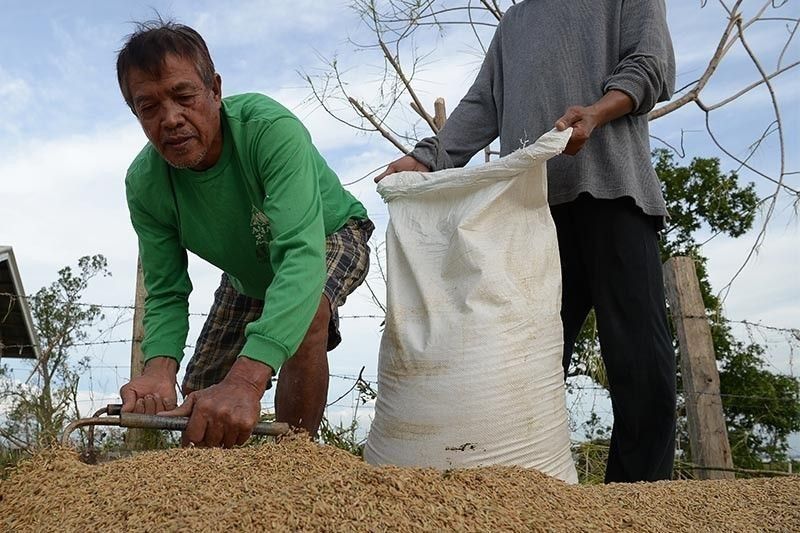Creation of ‘Rice Stock Exchange’ pushed

MANILA, Philippines — With the implementation of the Rice Tariffication law, the national government should also establish an industry counterpart of the Philippine Stock Exchange to prevent price manipulation and supply shortages in the future.
Rep. Ron Salo of party-list Kabayan urged implementors of Republic Act 11203 to execute the “long-delayed plans for a Rice Stock Market” especially since “modern rice trading mechanism should both have physical location and internet and mobile application access.”
“This is necessary for transparent and open market trading of rice between buyers and sellers, with the regulators and the public keeping a watchful eye on trades made, to thwart attempts at price manipulation, oversupply and shortages,” he pointed out.
He added that the “identities of all rice buyers, sellers and brokers should be open for all to see. Location information on all their bonded warehouses and other warehouses must be available on the Rice Stock Exchange.”
The House deputy majority leader maintained that establishing the Rice Stock Market could be among the first items of the Rice Industry Roadmap as mandated by the law and its implementing rules and regulations.
Salo said other rice-producing countries in Southeast Asia, East Asia and elsewhere in the world have long had mercantile exchanges where rice has been traded along with other major agricultural commodities.
“We have really been left behind. We are actually centuries behind. Grains have been traded in the mercantile exchanges of the US and Europe since the 19th century. Here in Asia, modern farm commodities trading began in the 1990s,” he disclosed.
“It is only through Rice Stock Exchange that we will be able to know the exact supply status of the staple as well as the demand for rice in the whole country. We will also see palay buying price for Filipino farmers, and the cost of imported rice shipments,” he added.
Meanwhile, a party-list group that represents the poor and marginalized farmers in the House of Representatives has called on the government to achieve self-sufficiency in producing the rice staple instead of depending heavily on imports from other countries.
“If there is a lesson that could be learned from the current Philippine drought, it is the ‘untenability’ of anchoring the rice and food security needs of our country on importation,” said Rep. Cecil Chavez of party-list Butil.
She added that a drought in the world’s top rice-producing countries, like giants China and India, “could wipe out the global rice surplus overnight and plunge the rice-consuming countries into a mad scramble for available rice at skyrocketing prices.”
Chavez said a dry spell in these countries, touted as the “world’s top rice producers,” will definitely be more than enough to “radically bring down global rice production and instantly wipe out the 50 million metric tons of rice surplus that is traded on the global market.”
“If the rice production in China and India falters, no amount of bountiful yields from Vietnam, Thailand and Bangladesh could offset the production loss from the two big countries,” she asserted.
She also said that the global rice surplus of about 50 million metric tons is enough during normal times but could disappear overnight once China or India ramp up their rice importation.
China, despite its record as the top rice producer, imports rice regularly, around six million metric tons annually, she added.
The drop in the volume of globally traded rice would bring a worst-case scenario to the Philippines, which has abandoned the pursuit of rice self-sufficiency in favor of unlimited rice importation, Chavez maintained.
In 2008, the Philippines imported more than two million metric tons of rice to offset the drought-induced short supply, a world record. If that scenario will take place in either China and or India, there surely will be panic and confusion in the rice-consuming countries.
Chavez said there is “no alternative to rice self-sufficiency, which the Philippine government can pursue on the basis on moderate costs and sound economics.”
“If the Philippine government will just give half of the support that the governments of Vietnam and Thailand currently give to their rice farmers, we will be on our road to rice self-sufficiency,” she claimed.
She said that the basis of the policy to end the quantitative restriction on rice imports and open up the country to unlimited rice importation was based on “voodoo economics” and was peddled by the economic managers of the Duterte administration.
Chavez asked for a reset on the policy and the pursuit of the more tenable and stable option of producing rice that is enough for the national requirements.
- Latest
- Trending































